HKJ
Flashaholic
A look at AAA flashlights (Updated)
[SIZE=+3]A look at AAA flashlights.[/SIZE]
This review is the first part of my AAA review, the second parts is here: Beamshoots from AAA flashlights.
Other AAA comparisons: January 2010, Mr.Lite KC-05, June 2010, July 2010, Penlights, September 2010, October 2010

This review is about AAA battery powered lights, each light will include a short description, some photos, indoor white wall and outdoor beamshot. I collect flashlights and like them with different colored bodies, but that does not mean that the lights only exists in the color I have, most lights exist in more discrete colors.
The flashlights I will include are (same sequence as in picture): Arc AAA, Ti ARC AAA, Killer AAA, Tiablo A1, Streamlight Microstream, LumaPower Avenger GX, Tank 007 TK-701, Leatherman S1, Leatherman S2, Fenix E01, Fenix L0D, Fenix LD01, Maglite Solitaire, Led Lenser P2, Led Lenser P3, LiteFLux LF2X, LiteFlux LF2XT, Peak Matterhorn #1, Peak Matterhorn #2, Peak Eiger, Peak Baltic.

It is Peak Eiger, Streamlight Microstream and Ti ARC AAA in my hand. Flashlights can be categorized in many different ways, I will start by listing some categories, explain them, and list the lights that are in that category.
[SIZE=+2]Emitter type[/SIZE]
Today most flashlights use LEDs (Light Emitting Diodes) and there is a reason for that. Some of the advantages of LEDs are:
LEDs are not without any disadvantages, the main one is their color rendering. The light from LEDs does not contain the full spectrum, but are missing some colors, this will affect how some colors look. What colors are affected depends on the color of the LED, e.g. if it is "cool white" or "warm white". For use outdoors in natural settings, the "warm white" has an advantage, see beamshots for the Peak Eiger for an example of a "warm white" beamshots.
[SIZE=+2]Operation[/SIZE]
The lights in this review can be split in two different main operating types, twist and push button. The button has some sub catagories.


[SIZE=+2]Settings[/SIZE]
Modern flashlights often have more settings, e.g. a high setting with lots of light and short runtime, and a low setting with much lower light output and long runtime. The lights might also have some flashing settings (e.g. SOS and strobe). Some of the most advanced lights have the ability to adjust the settings (programmable), including both light levels and flash settings.
All these possibilities can be an advantage or a liability, depending on how and for what the flashlight is used.
[SIZE=+2]Brightness[/SIZE]
Depending on type of light emitter and how it is controlled, light can be made with a wide range of light output, from weak lights that can be used to locate a keyhole but not spoil the night vision, to bright light that can fill a big room with light and definitely spoil any night vision. This review is about AAA lights and that battery size imposes a limit on maximum output, but anybody that has only used old style incandescent flashlights is in for a big surprise.
Note: Peak light only has one brightness setting, but that setting can be specified when ordering the light.
[SIZE=+2]Battery type[/SIZE]
The heading to this review says AAA batteries and some people will probably believe that this defines the battery type, but that is not fully correct. There are multiple AAA sized battery types, most can be used interchangeably, but one AAA sized battery is very different.
[SIZE=+2]Material and surface treatment[/SIZE]
[SIZE=+2]How to carry the flashlight[/SIZE]
These small lights are designed to always be carried, some of the typical ways to carry them are:
Using these lights, you usual hold the light in a hand, to prevent dropping it, you can secure it with a lanyard around the wrist. Here is shown a cheap lanyard, that uses a thin wire to attach to the light, a better lanyard will use a ring instead.

If you need both hands, you can hold the light with your mouth, or if it has a clip mounted at the head, the light can be mounted on a hat brim and be used as a headlamp.
[SIZE=+3]Flashlights[/SIZE]
[SIZE=+2]ARC AAA[/SIZE]

This light has been on the market for a long time, but with occasional updates. The light is not one of the cheapest on the market, but has proven that ARC known how to make a very reliable light, that can take all the bumps from everyday use.
The light does not have any spring behind the battery, i.e. be careful not to tighten the light too much.
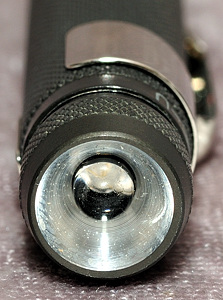
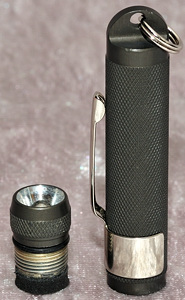
NOTE my version is the UV light, the beam shoots only shows the visible part of the spectrum, a ARC with GS led will be a bit more powerful than the Fenix E01



Current consumption: 150mA
Mass with battery: 24 gram
Volume: 8.7 cm3
Light emitter: 5mm led, it is possible to select different types.
User interface: Twist
Settings: 1 level
Can be bought here: http://www.arcflashlight.com/
[SIZE=+2]ARC AAA Ti[/SIZE]

This light is from ARC and McGizmo (McGizmo calls it "Titanium Sapphire AAA"), the light was made as an experiment and was sold out rather fast, both manufacturers have decided to make a new series of them.
Opposite most other lights with a 5mm LED, this light does have a front glass, not an exposed LED. From ARC this light can be bought with two different LEDs and it is possible to buy both and change between them.
The light does not have any spring behind the battery, i.e. be careful not to tighten the light too much.


Here is a picture of the replaceable led module, this one is the 3mm DS version:






Current consumption: 140mA
Mass with battery: 28 gram
Volume: 9 cm3
Light emitter: 5mm led (Nichia white GS) or 3mm led (Nichia white DS)
User interface: Twist
Settings: 1 level
Can maybe be bought here: http://www.arcflashlight.com/
[SIZE=+2]Killer AAA[/SIZE]

This flashlight is manufactured in Titanium and is a custom light (i.e. it is only made in a limited number), it has a very high finish. My version is a special run that was colored with "Splash" colors.
This light uses a special 5 mm led with multiple dies, that is supposed to give more light, but I have not been able to confirm it with my measurements.


Looking at the led in the picture, it can be seen that it has a lot of wires inside, it is because it is the special high power version.




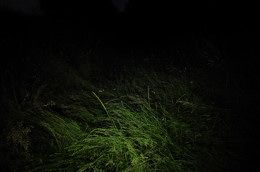
Current consumption: 230mA
Mass with battery: 34 gram
Volume: 9.8 cm3
Light emitter: 5mm led
User interface: Twist
Settings: 1 level
Can be bough here: http://photonfanatic.com/LightsFS.html
[SIZE=+2]Tiablo A1[/SIZE]

Tiablo's AAA light. A nicely designed one level flashlight. The removeable clip is mounted in a recess and will not slide during use and a GITD (Glow in the dark) ring is mounted on the light, making it easy to locate the light during blackouts.






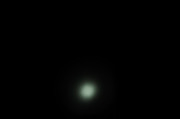




Current consumption: 700mA
Mass with battery: 30.5 gram
Volume: 12.6 cm3
Light emitter: Luxeon Rebel 100
User interface: Twist
Settings: 1 level
[SIZE=+2]Streamlight Microstream[/SIZE]

A aluminum light with a nicely focused led. The light includes a clip, that can not slide, but can be removed. Due to the design the clip will scratch the flashlight body, when replacing the battery and the surface treatment is only type 2. The light is supplied with a lanyard and a split ring, but the light has no hole for mounting the ring (I supposed it must be mounted on the clip). Turning the tailcap will lockout the light, and the switch is also a bit hard to press.
Streamlight are very confident about the strength of the light and promises that the front glas and the clips are unbreakable.








Current consumption: 200mA
Mass with battery: 30.5 gram
Volume: 14 cm3
Light emitter: power led
User interface: Button, forward switch
Settings: 1 level
[SIZE=+2]LumaPower Avenger GX[/SIZE]


Lumapower has selected to make a light with 3 fixed levels and then be flexible in the physical design. They supplies two tailcaps, one with a switch and one without, the switch can either be with GITD (Glow in the Dark) or black. The light is supplied with two clips a metallic and a black, but they are not a very strong constrution. The clip can be mounted in either end of the light and the knurling prevent it from sliding off the light. Also included with the light is a lanyard and a lobster claw, they can either be mounted to the clip or to the tailcap without switch. I believe that it is a nice collection of accessories, but would have prefered some more solid clips and a way to mount the laynard/lobster claw directly on the tailcap with switch.
Selection of light level is done with fast on/off sequences, the selected brightness will be remembered to next turnon. For a light without switch, the twist is between head and body, this can also be used as lockout when the switch is mounted.
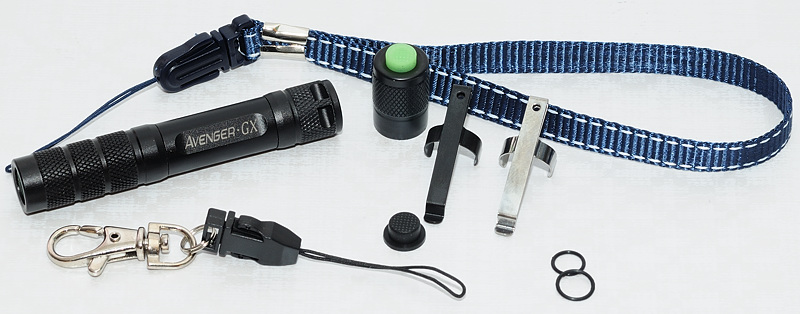




The light uses pwm at 1.3 kHz to control the brightness, these two traces shows low and medium brightness, there is no pwm on high:


Low:




Medium:


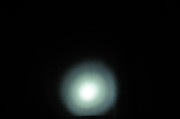

High:




Low, medium, high



Current consumption: low:65mA, medium:265mA, high:640mA
Mass with battery: min. 34 gram without button and accessories, 43 gram with button, clip and lobster claw.
Volume: 15 cm3
Light emitter: Cree XP-E power led
User interface: Twist or Button, forward switch
Settings: 3 levels
[SIZE=+2]Tank007 TK-701[/SIZE]

This is a rather cheap flashlight, but for the low price it is ok. The only problem I have seen on the lights is the missing spring for the battery. The battery will press directly against the top and bottom of the battery tube. Tightening the light too much can damage the light, on my light it will disable the light, but loosing it up again will fix it.
The light output is not very high, and it has a rather high current consumption.
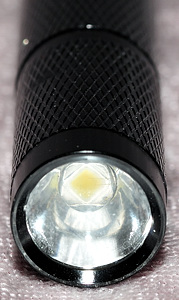






Current consumption: 570mA
Mass with battery: 31 gram
Volume: 12.8 cm3
Light emitter: Power led from SSC
User interface: Button, reverse switch
Settings: 1 level
Can be bought here: http://www.dealextreme.com/details.dx/sku.18630
[SIZE=+2]Leatherman S1[/SIZE]

Leatherman's small flashlight with one output level and a switch to turn on/off. The light has both a ring and a clip, making it very flexible how to carry it. The ring holder must be mounted when using the clip or the clip will slide off. The button makes it easy to use the light with one hand and will make this light an obvious candidate for people that need to turn the light on/off often. The light output from it is purple, like other GS lights and the light output is the same as the Fenix E01.




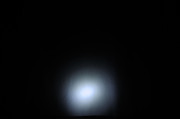
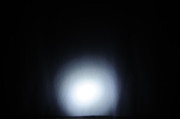
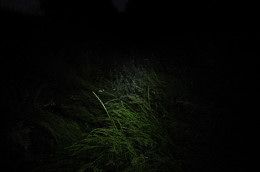
Current consumption: 70mA
Mass with battery: 33 gram
Volume: 12.6 cm3
Light emitter: 5mm led (Nichia white GS)
User interface: Button, reverse switch
Settings: 1 level
[SIZE=+2]Leatherman S2[/SIZE]

Leatherman's big AAA flashlight with two output levels, one very low and one very high. The light has both a ring and a clip, making it very flexible how to wear. The ring holder must be mounted when using the clip or the clip will slide off. The button makes it easy to use the light with one hand and will make this light a obvious candidate for people that need to turn the light on/off often.
The light always comes on in low and a light press on the button will change to high.
The front of the light is in stainless steel, this will protect the light from falls on hard surfaces.


The light uses pwm at 100 Hz to control the brightness, these two traces shows low and high brightness:


On low:




On high:

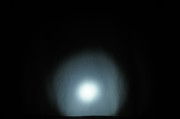


Low, high


Current consumption: low 114mA, high 760mA
Mass with battery: 36 gram
Volume: 13.5 cm3
Light emitter: Power led from Cree
User interface: Button, reverse switch
Settings: 2 levels
[SIZE=+2]Fenix E01[/SIZE]

An inexpensive light from Fenix, with long battery lifetime, it uses a 5mm LED. This LED is weak compared to other Fenix lights and the light color is a bit purple. The construction is solid and good quality.


This is one of the few lights that exist in multiple colors:





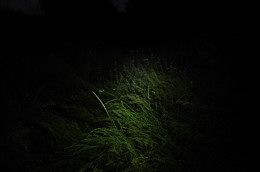
Current consumption: 85mA
Mass with battery: 26 gram
Volume: 11 cm3
Light emitter: 5mm led (Nichia white GS)
User interface: Twist
Settings: 1 level
[SIZE=+2]Fenix L0D[/SIZE]

Fenix old (2007/2008) version of a powerful AAA light. The light is turned on by tightening it together. Twisting it loose and tight again will change to the next setting. It will always come on at medium, next is low, then high, strobe, sos.


My version is the xmas 2007 version, the normal version has a more discrete black color. Even with the ring for keychain mounting, the light can stand on its tail.
The light uses pwm at 100 Hz to control the brightness, these two traces shows low and medium brightness, there is no pwm on high:


Strobe is 8.3 Hz and is at full brightness, i.e. no pwm. The sos sequence is 13 seconds long and with 10 seconds between.


On low:
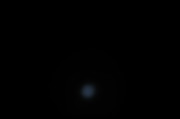
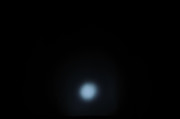


On medium:




On high:
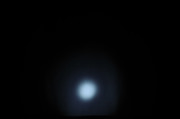



Low, medium, high:



The flashlight can take a lot of abuse, the two lights in the picture have both been in the washing machine and the black has also been in the tumble dryer, where I found it in 3 pieces (Head, body and battery). The most obvious sign of the mistreatment is the scratches at the front. Both lights are still working.

Current consumption: low 107mA, medium 270mA and high 780mA
Weight with battery: 27 gram
Volume: 11.5 cm3
Light emitter: Power led from Cree
User interface: Twist
Settings: 3 light levels, strobe and sos
[SIZE=+2]Fenix LD01[/SIZE]

This light is an update of L0D, the biggest change is the removal of the flashing modes. The light is turned on by tightening it together. Twisting it loose and tight again will change to the next setting. It will always come on at medium, next is low, then high.
My version is the stainless steel version, the normal version is black aluminum.


The light uses pwm at 1.25 kHz to control the brightness, these two traces shows low and medium brightness, there is no pwm on high:


On low:
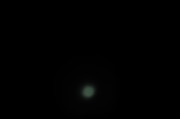



On medium:


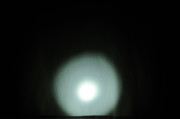
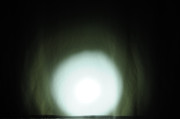
On high:


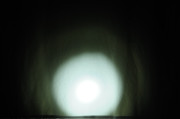

Low, medium, high:



Current consumption: low 150mA, medium 300mA and high 770mA
Mass with battery: 47 gram for SS model.
Volume: 11.6 cm3
Light emitter: Power led from Cree
User interface: Twist
Settings: 3 light levels
[SIZE=+2]Maglite Solitaire[/SIZE]

An old well known flashlight and the absolute weakest in this roundup of small lights. The light also has a short runtime at full output and then a steady declining output. The light has a very warm light color from the incandescent bulb.
Maglite does make this light in multiple colors, but they uses a weak surface treatment (Type 2), i.e. the surface will get scratches very fast, if the light is used on a keychain.


With the bezel removed the light can be used for area lightning, e.g. in a tent.
With bezel mounted and focused:
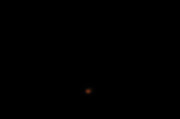



With bezel mounted and not focused:



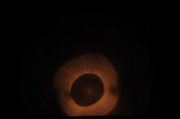
Without bezel:




The above pictures are a bit dark, to show the beam I have takes a serie more with increased exposure, for the one without bezel I did increase exposure twice. I.e. the pictures are: With bezel mounted and focused, With bezel mounted and not focused, Without bezel, Without bezel
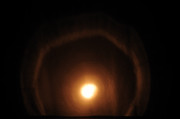

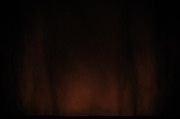

With bezel mounted and focused:

Current consumption: 212mA
Mass with battery: 24 gram
Volume: 10.3 cm3
Light emitter: Incandescent bulb
User interface: Twist
Settings: 1 level
[SIZE=+2]Led Lenser P2[/SIZE]

This is a inexpensive light, but good for the money. I got the light in a packing where it was possible to try the light, without unwrapping it, an extra battery was also included. The light also included a lanyard and a holster. The optic on this light is a bit special as it includes a real lens with a focus adjust. To adjust the focus, the head must be turned.
The light is not perfect, the surface treatment is only type II and not very scratch resident, the clips can slide of the light and it does not have any lockout function. The instruction warns against using NIMH and Lithium batteries.




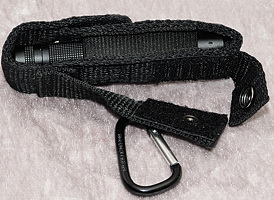
Focus adjustment:


Wide focus:

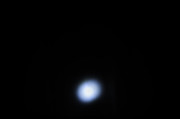


Narrow focus:




Wide and narrow focus:
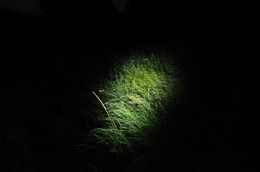

Current consumption: 320 mA with fresh battery, will drop when battery is used
Mass with battery: 39 gram (with included AAA battery)
Volume: 15.9 cm3
Light emitter: 5 mm Nichia led
User interface: Button, forward switch
Settings: 1 level
[SIZE=+2]Led Lenser P3[/SIZE]

This light is nearly the same as P2, except that the head on the light is bigger and does not turn, instead it slides to change focus. The supplied accesories are also the same, but only one battery, because this box has no test button.





Focus adjustment:


Wide focus:




Narrow focus:




Wide and narrow focus:
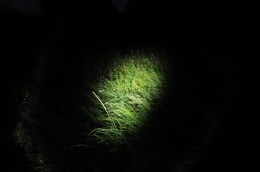

Current consumption: 320 mA with fresh battery, but drops fast when light is on.
Mass with battery: 42.3 gram (including supplied AAA battery)
Volume: 21 cm3
Light emitter: 5 mm Nichia led
User interface: Button, forward switch
Settings: 1 level
[SIZE=+2]LiteFlux LF2X[/SIZE]




The world's most advanced AAA flashlight and also a very powerful flashlight. The light comes in a wood box with some accessories: lubricant, diffuser and two tail caps, either as necklace or with a clip.
This light is turned off when tightened, loosen it to turn it on, there are two loose positions (marked P1 and P2 on the body) to select between two settings. All other settings are done by fast changing between these two positions, this requires good dexterity or a bit of light to see the markings.
The light has a memory that can remember the last selection and all the programming. The programming is very extensive, all light levels and timing of the strobe modes can be programmed.
All types of batteries can be used Alkaline/Lithium/NiMH and Li-Ion. Alkaline cells are not recommend because they cannot deliver enough power for the light to reach full power. When using Li-Ion the max. output will be nearly double of the other battery types, this is by design and it not outside the specifications, but do not run the light to long on full power (it gets hot).
The necklace has a special quick release connection to the light, but I do not like the lock, it is not safe enough for me. The light does not include any good possibilities for putting it on a keychain, but it is possible to make one that can replace the clip.
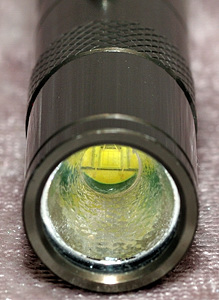

This is not a light for people that believe a VCR is hard to program. I will recommend to download the manual, before buying the light.
LiteFlux has developed a new version of this light, called LF2XT (Adding T to the name), see below for a description.
The light uses pwm at 7.8 kHz to control the brightness, the trace here shows min. level:

On min. with NiMH:




On max. with NiMH:

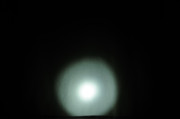


On min. with LiIon:




On max. with LiIon:




On max. with LiIon and diffuser:




Low, high and high with diffuser, running on NiMH



Low, high and high with diffuser, running on LiIon


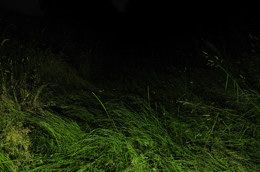
Current consumption with NiMH battery: off 5uA, min. 10mA, max. 1100mA
Current consumption with LiIon battery (Type 10440 with 320mAh): Off 20uA, min. 4mA, max. 780mA (This is about double the power compared to NiMH)
Mass with battery: 34 gram (31 with LiIon)
Volume: 12.4 cm3 (With clip)
Light emitter: Power led from Cree
User interface: Twist, with 3 positions: off-P1-P2
Settings: 3 light levels, 2 strobes, 2 sos, all can be programmed.
Can be bought here: LED Cool or Eliteled
[SIZE=+2]LiteFlux LF2XT[/SIZE]


A new version (2009) of the worlds most advanced flashlight, this time the twist is replaced by a tail button, the light is still very powerfull. In the new version the accessories has been reduced, the light is still supplied in the wood box , and includes lubricant, extra o-rings, clip and a keyring, but no diffuser or ball chain.
The light has two different user interfaces, when delievered it is in the simple mode, i.e. press the button to turn on or off, hold the button to change light output. Pressing a code, the light changes to the advanced user interface with 5 settings, where each setting can be program to a brightness or a flashing mode (The flashing modes are not the same as LF2X).
The light can use any type of AAA battery, but alkaline are to weak for full power. The light is designed to use LiIon and the increased brightness with LiIon is within specifications for this light.




The light uses pwm at 1.9 kHz to control the brightness, the trace here shows min. level:

On min. with NiMH:




On max. with NiMH:




On min. with LiIon:




On max. with LiIon:


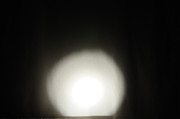

Low, high, running on NiMH


Low, high, running on LiIon

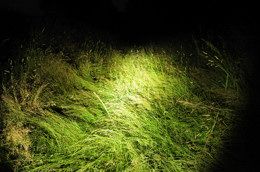
Current consumption with NiMH: off 2uA, min 18mA, max 1000mA
Current consumption with LiIon: off 7.5uA, min 5.2mA, max 620mA
Mass with battery: 34 gram (31 with LiIon)
Volume: 13 cm3
Light emitter: Cree XP-E power led
User interface: Button, electronic signal
Settings: variable brightness or 5 position all can be programmed for brightness or flashing modes
Can be bought here: LED Cool, kuku427 or Eliteled
[SIZE=+2]Peak Led Solution Matterhorn #1[/SIZE]


This is a brass AAA light from the Matterhorn serie, this serie contains many different lights, because it is possible to order material, battery size, brightness and some other details. This light is with one led and brightness "UP".
The diffuser for this light is a bit special, it has a hole in it. My light is in brass and the construction feels very solid and as can be seen on the picture, it is also possible to get a smaller battery tube for the light, I have tried that in my Look on small flashlights.



Without diffuser:
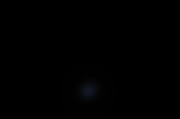



With diffuser:




Without and with diffuser:


Current consumption: NiMH:60mA, LiIon:85mA
Mass with battery: 46.5 gram
Volume: 9.5 cm3
Light emitter: 5mm led
User interface: Twist, but it can be ordered with a momentary pushbutton.
Settings: 1 level
Can be bought here: http://www.peakledsolutions.net/
[SIZE=+2]Peak Led Solution Matterhorn #2[/SIZE]



This is a stainless steel light from the Matterhorn series (See above). This light has 3 led's and brightness "UP".
For this battery tube I also got a momentary push button, hold it down for light or screw the light together for constant on. Like the brass version, this light feels very solid.

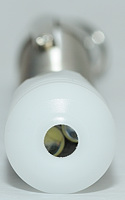

Without diffuser:



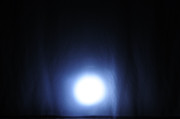
With diffuser:

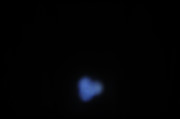

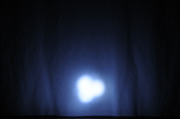
Without and with diffuser:


Current consumption: 230mA
Mass with battery: 48 gram
Volume: 10.8 cm3
Light emitter: 3 x 5 mm led
User interface: Twist, but it can be ordered with a momentary pushbutton.
Settings: 1 level
Can be bought here: http://www.peakledsolutions.net/
[SIZE=+2]Peak Led Solution Eiger[/SIZE]


This is a new (2009) AAA flashlight from Peak, it has the same size as Matterhorn series and match parts with it, but instead of a 5 mm led it uses a power led. On top of all the usual body options, this light also has 8 power levels and 3 different optic that it can be ordered with.
I have bought 2 brightness levels #2 and #8, both with medium optic, I did also order some extra bodies and can use 10180, 10280, AAA and 2xAAA batteries.




With #2 and NiMH:




With #2 and LiIon:




With #8 and NiMH:




With #8 and LiIon:




#2 with NiHM og #8 with NiMH


Current consumption with NiHH: #2=105mA #8=860mA, #8 is ustable in current measurement.
Current consumption with LiIon: #2=80mA #8=1000mA
Mass with battery: 49 gram (47 med LiIon)
Volume: 13.5 cm3
Light emitter: Rebel 100 power led
User interface: Twist, but it can be ordered with a momentary pushbutton.
Settings: 1 level
Can be bought here: http://www.peakledsolutions.net/
[SIZE=+2]Peak Led Solution Baltic[/SIZE]



This is a stainless steel light from the Baltic series, this serie contains many different lights, because it is possible to order material, battery size, brightness and some other details. This light has one led and brightness "SUP". The battery tube can be equipped with a momentary pushbutton, to turn on permanently the ligth must be screwed together. This light also has the diffuser with the hole in. Like the other steel lights, this light feels very solid.



Without diffuser:
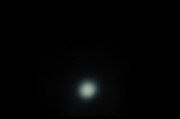



With diffuser:




Without and with diffuser:

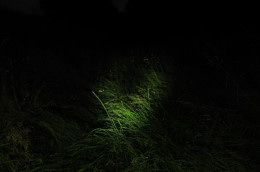
Current consumption: 530mA
Mass with battery: 55.5 gram
Volume: 13.5 cm3
Light emitter: power led
User interface: Twist, but it can be ordered with a momentary pushbutton.
Settings: 1 level
Can be bought here: http://www.peakledsolutions.net/
[SIZE=+2]Mako[/SIZE]

This is a custom light made in a small serie. The light is made in titanium with a really good finish. The light has two levels, when twisted together it first goes on at low level with a bit more twisting it changes to high level (That is not really that high). The light has a slot for a trit and I have mounted a "ice-blue" in mine.
The light was manufactured with two different beam spreads, a focuesed and a non focused, mine is the non focused version.



Current consumption: low: 18mA, high 60mA
Mass with battery: 28 gram
Light emitter: 5mm Cree led, in 15º or 60º version.
User interface: Twist
Settings: 2 levels
Manufacturer: http://muyshondt.net/
[SIZE=+2]Maglite 2C flashlight[/SIZE]
Led lights with power led has a high output, here I have taken some pictures of the 2C Maglite:
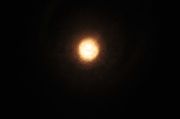



The Maglite can concentrate the light more, due to the big reflector, but the total light output is not higher than for some of the small AAA lights (But it has longer runtime).
[SIZE=+3]Notes[/SIZE]
All pictures of the light output are made with fixed exposure and locked daylight white balance.
The camera settings are:
This exposure makes the brightness step between the pictures 4 times.
All current measurements and weight/mass measurements are with Eneloop NiMH batteries, this battery is rated for 800mAh
uA is used for micro ampere and 1000uA is equal to 1mA
The volume is calculated as a cylinder and does not include clips/rings/lanyards, I also do some rounding for bottom shape.
[SIZE=+3]A look at AAA flashlights.[/SIZE]
This review is the first part of my AAA review, the second parts is here: Beamshoots from AAA flashlights.
Other AAA comparisons: January 2010, Mr.Lite KC-05, June 2010, July 2010, Penlights, September 2010, October 2010

This review is about AAA battery powered lights, each light will include a short description, some photos, indoor white wall and outdoor beamshot. I collect flashlights and like them with different colored bodies, but that does not mean that the lights only exists in the color I have, most lights exist in more discrete colors.
The flashlights I will include are (same sequence as in picture): Arc AAA, Ti ARC AAA, Killer AAA, Tiablo A1, Streamlight Microstream, LumaPower Avenger GX, Tank 007 TK-701, Leatherman S1, Leatherman S2, Fenix E01, Fenix L0D, Fenix LD01, Maglite Solitaire, Led Lenser P2, Led Lenser P3, LiteFLux LF2X, LiteFlux LF2XT, Peak Matterhorn #1, Peak Matterhorn #2, Peak Eiger, Peak Baltic.

It is Peak Eiger, Streamlight Microstream and Ti ARC AAA in my hand. Flashlights can be categorized in many different ways, I will start by listing some categories, explain them, and list the lights that are in that category.
[SIZE=+2]Emitter type[/SIZE]
Today most flashlights use LEDs (Light Emitting Diodes) and there is a reason for that. Some of the advantages of LEDs are:
- Good efficiency, i.e. more light for the same amount of power, this can be realized as either higher output or longer runtime.
- They can stand hard handling, a LED has a lifetime of thousands of hours and is not damaged by impact, a incandescent bulb only has a lifetime of a few hours and can easily break on impact.
- Multiple levels, it is easy to make LED lights with multiple output levels. This can also be done with incandescent, but has some practical limitations. On lower levels the incandescent light color will be warmer (more red), and the already bad efficiency will be even lower.
LEDs are not without any disadvantages, the main one is their color rendering. The light from LEDs does not contain the full spectrum, but are missing some colors, this will affect how some colors look. What colors are affected depends on the color of the LED, e.g. if it is "cool white" or "warm white". For use outdoors in natural settings, the "warm white" has an advantage, see beamshots for the Peak Eiger for an example of a "warm white" beamshots.
- [SIZE=+1]5mm LED[/SIZE]

Flashlights are made with two different types of LEDS. One type is the 5mm LED, it looks like a small bulb. These LEDs have a strict limit on maximum power, because they have limited cooling. They are good for a flashlight when you need a long runtime and not the most powerful light. Because the LEDs already are encapsulated in a plastic bulb like package, they do not need to sit behind a protective glass in the flashlight.
The following lights uses 5mm LEDs:
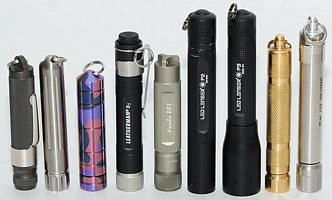
Arc AAA, Ti ARC AAA, Killer AAA, Leatherman S1, Fenix E01, Led Lenser P2, Led Lenser P3, Peak Matterhorn #1, Peak Matterhorn #2 - [SIZE=+1]Power LED[/SIZE]

The other LED type is known as a Power LED. These LEDs do not have any mechanical protection and have to be mounted on a heatsink with good thermal connection to the rest of the flashlight. Power LEDs always require a glass or plastic window in front of them for protection. These LEDs are used in more powerful flashlights, and some of the lights can get warm, or hot, when in use. The light output from a flashlight with power led is often far above the output of a typical incandescent flashlight. However, this review is about small lights with a single AAA battery, and these batteries do not have enough energy to maintain a high output as long as a 2C or 2D cell incandescent flashlight, even with the efficiency advantage of LEDs.
The following flashlights uses Power LEDs:

Tiablo A1, Streamlight Microstream, LumaPower Avenger GX, Tank 007 TK-701, Leatherman S2, Fenix L0D, Fenix LD01, LiteFLux LF2X, LiteFlux LF2XT, Peak Eiger, Peak Baltic - [SIZE=+1]Incandescent [/SIZE]


This is the old technology with a white/red hot wire inside a bulb and it has some disadvantages:- A high power consumption compared to the light output.
- Light can be quite warm tinted (red).
- The bulb (wire) can break on impact.
- The bulb has a very limited lifetime.
This type of bulb also has some advantages:
- Very inexpensive to manufacture.
- The color spectrum does more closely match the sun, this gives a good color rendition.
- Can be manufactured in all sizes, from very small to very big.
The following lights uses a incandescent bulb:

Maglite Solitaire
[SIZE=+2]Operation[/SIZE]
The lights in this review can be split in two different main operating types, twist and push button. The button has some sub catagories.


- [SIZE=+1]Push button, activates when half pressed[/SIZE]
A button in the end of the flashlight. This makes it easy to use the light with one hand, but increases the risk of accidental activation in a pocket or a bag. These buttons exist in multiple variations, the first on is called "forward switch", it will turn on when pressed half way down and lock when pressed fully down. This makes it usefull for signalling (i.e. Morse), because it is easy to make a single flash. This does not work on multi level lights (i.e. Avenger), because they will change level with each press.

Streamlight Microstream, LumaPower Avenger GX, Led Lenser P2, Led Lenser P3 - [SIZE=+1]Push button, activates when released[/SIZE]
Next variation on the button, must be fully pressed and then released to activated, this is usual called a "reverse switch". This type of switch is not suitable for signaling (i.e. Morse). When on, a light press will temporary switch the light off. This is used to change level on S2.

Leatherman S1, Leatherman S2, Tank007 TK-701 - [SIZE=+1]Push button, electronic signal[/SIZE]
Some of the more advanced lights has a button that only sends a signal to the microprocessor in the light when pressed. The actual interpretation of the press is up to the microprocessor. These lights will also have a small current drain when off, because the microprocessor need some power to monitor the button.

LiteFlux LF2XT - [SIZE=+1]Push button, only activated when pushed[/SIZE]
To get a very reliable switch, some lights has a button without any locking function, i.e. as long as pressed it is on. This will prevent any possibility that the lights turns permanently on when using the button. The light can (and usual has) other means of turning it constant on. Some of the lights in this roundup can be ordered with momentary switch, in the photo only then only Eiger is mounted with the push button, but it can also be used on the other lights.

Peak Matterhorn #1, Peak Matterhorn #2, Peak Eiger, Peak Baltic - [SIZE=+1]Twist[/SIZE]
Another way to activate lights, is by twisting the front or back of the light to turn the light on. Most people will probably prefer to do this with two hands, but it is possible to do with one hand:

Arc AAA, Ti ARC AAA, Killer AAA, Tiablo A1, LumaPower Avenger GX, Fenix E01, Fenix L0D, Fenix LD01, Maglite Solitaire, LiteFLux LF2X, Peak Matterhorn #1, Peak Matterhorn #2, Peak Eiger, Peak Baltic
[SIZE=+2]Settings[/SIZE]
Modern flashlights often have more settings, e.g. a high setting with lots of light and short runtime, and a low setting with much lower light output and long runtime. The lights might also have some flashing settings (e.g. SOS and strobe). Some of the most advanced lights have the ability to adjust the settings (programmable), including both light levels and flash settings.
All these possibilities can be an advantage or a liability, depending on how and for what the flashlight is used.
- 1 setting: Arc AAA, Ti ARC AAA, Killer AAA, Tiablo A1, Streamlight Microstream, Tank 007 TK-701, Leatherman S1, Fenix E01, Maglite Solitaire, Led Lenser P2, Led Lenser P3, Peak Matterhorn #1, Peak Matterhorn #2, Peak Eiger, Peak Baltic.
- Multiple light levels: LumaPower Avenger GX, Leatherman S2, Fenix L0D, Fenix LD01, LiteFLux LF2X, LiteFlux LF2XT
- Flashing settings: Fenix L0D, LiteFLux LF2X, LiteFlux LF2XT
- Programmable: LiteFLux LF2X, LiteFlux LF2XT
[SIZE=+2]Brightness[/SIZE]
Depending on type of light emitter and how it is controlled, light can be made with a wide range of light output, from weak lights that can be used to locate a keyhole but not spoil the night vision, to bright light that can fill a big room with light and definitely spoil any night vision. This review is about AAA lights and that battery size imposes a limit on maximum output, but anybody that has only used old style incandescent flashlights is in for a big surprise.
- [SIZE=+1]Weak[/SIZE]

LumaPower Avenger GX, Maglite Solitaire, LiteFLux LF2X, LiteFlux LF2XT - [SIZE=+1]Medium[/SIZE]

Ti ARC AAA, Killer AAA, Streamlight Microstream, LumaPower Avenger GX, Leatherman S1, Fenix E01, Fenix L0D, Fenix LD01, Led Lenser P2, LiteFLux LF2X, LiteFlux LF2XT, Peak Matterhorn #1, Peak Matterhorn #2, Peak Eiger #2 NiMH - [SIZE=+1]Bright[/SIZE]
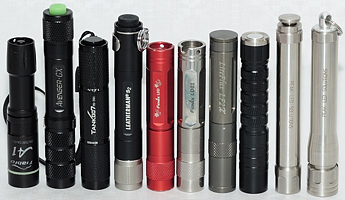
Tiablo A1, LumaPower Avenger GX, Tank 007 TK-701, Leatherman S2, Fenix L0D, Fenix LD01, Led Lenser P3, LiteFLux LF2X, LiteFlux LF2XT, Peak Eiger #2 LiIon, Peak Eiger #8 NiMH, Peak Baltic - [SIZE=+1]Very bright[/SIZE]

Fenix L0D, Fenix LD01, LiteFLux LF2X, LiteFlux LF2XT, Peak Eiger #8 LiIon
Note: Peak light only has one brightness setting, but that setting can be specified when ordering the light.
[SIZE=+2]Battery type[/SIZE]
The heading to this review says AAA batteries and some people will probably believe that this defines the battery type, but that is not fully correct. There are multiple AAA sized battery types, most can be used interchangeably, but one AAA sized battery is very different.
- [SIZE=+1]Alkaline[/SIZE]

All flashlights in this review can use these common batteries, but the more powerful lights will drain the batteries very fast and can not reach maximum brightness. These batteries are best for the lights with 5mm LEDs. A problem with Alkaline batteries is that they sometimes leak, I do not recommend to use them in expensive lights.
This battery is from a Fenix L0D, I was lucky, the light survived:

- [SIZE=+1]NiMH[/SIZE]

A rechargeable battery that can be used in high power lights. These batteries exist in two version, a regular with high capacity (1000+ mAh) and a low discharge type (usual about 800 mAh), this type is also called precharged, because it can be charged at the factory and keep the charge. The low discharge type can keep a charge for years and I believe that it is the best battery for most flashlights. - [SIZE=+1]Lithium(-iron)[/SIZE]

These batteries can (in most cases) directly replace a Alkaline battery and will improve the runtime, the storage time and remove the risk of a leaking battery, they also work in very cold weather. The disadvantage is the price!
These batteries can be store for 10 to 15 years, this makes them very useful for emergency lights, i.e. lights that are not really used, but must be ready to use at all times (That can be at the fuse box or in the car).
PS: The picture shows a cheap Chinese imitation, the good batteries are called Energizer Lithium L92 (also Energizer e2). - [SIZE=+1]LiIon[/SIZE]

CAVEAT EMPTOR, this look like any AAA battery, but has a significantly higher voltage and will damage light not designed for it. If the light is designed for LiIon, the advantage can be higher output with this type of battery.
The following lights support LiIon: LiteFLux LF2X, LiteFlux LF2XT, Peak Eiger
[SIZE=+2]Material and surface treatment[/SIZE]
- [SIZE=+1]Aluminum[/SIZE]
Most flashlights are made from aluminum, because it has some good properties for flashlights: It has low density and is good at transferring heat. But it also has one disadvantage, the surface can very easily scratch, on most lights this is solved by using hard-anodizing (Also called Type III anodizing) on the surface. This surface treatment is very scratch resistant, but the selection of colors are a limited. The treatment also has a problem with color consistency, i.e. the different parts of the light does not have exactly the same color, here are two examples:


The most common colors are black and natural (Natural is many different colors, mostly dark green). As can be seen from the two pictures above, other colors also exist.
Another surface treatment is "type 2 anodizing", this treatment allows many bright colors and has no problem with color consistency, but the surface is not very strong and will get scratched easily, and the scratches are very visible due to the aluminum below.
Aluminum can also be used without surface treatment, it does not corrode, but it will get scratched. - [SIZE=+1]Titanium[/SIZE]
Titanium can both be used with and without surface treatment, it is very strong and the density is considerable lower than steel.
For people that want a light around the neck, Titanium is very good, and there is no risk of corrosion.
Flashlight in Titanium is usual more expensive than aluminum lights, some of the reasons are that Titanium is more expensive and it is harder to process. Titanium is also often used for custom lights, i.e. by people that design small series of flashlights, one of the reasons for this is to avoid being compared to cheap mass produced aluminum flashlight. - [SIZE=+1]Stainless steel [/SIZE]
Flashlights in stainless steel is rather heavy and are usual without any surface treatment, The steel looks good without treatment and can stand a lot of abuse.
[SIZE=+2]How to carry the flashlight[/SIZE]
These small lights are designed to always be carried, some of the typical ways to carry them are:
- [SIZE=+1]In the keychain[/SIZE]
Do not mount the light directly in the keychain, remember to put a small ring in between (This ring is usual included with the light). This way to carry the light is rather hard on the look of the light, only HA or steel can really stand up to it.
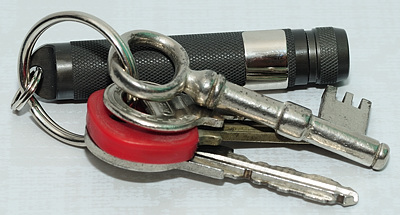
- [SIZE=+1]Around the neck[/SIZE]
Put a chain on the light and you can put it around the neck, remember only do it with waterproof lights. The picture shown is a titanium light with a titanium chain:

- [SIZE=+1]In a pocket[/SIZE]
Just be careful when washing the clothes! - [SIZE=+1]In a holster[/SIZE]
These lights are so small that you seldom will need a holster.


- [SIZE=+1]Hanging in a loop (belt strap)[/SIZE]
By mounting a lobster claw on the light in can be fastened to any loop on your clothes.

- [SIZE=+1]In a bag[/SIZE]
Using these lights, you usual hold the light in a hand, to prevent dropping it, you can secure it with a lanyard around the wrist. Here is shown a cheap lanyard, that uses a thin wire to attach to the light, a better lanyard will use a ring instead.

If you need both hands, you can hold the light with your mouth, or if it has a clip mounted at the head, the light can be mounted on a hat brim and be used as a headlamp.
[SIZE=+3]Flashlights[/SIZE]
[SIZE=+2]ARC AAA[/SIZE]

This light has been on the market for a long time, but with occasional updates. The light is not one of the cheapest on the market, but has proven that ARC known how to make a very reliable light, that can take all the bumps from everyday use.
The light does not have any spring behind the battery, i.e. be careful not to tighten the light too much.


NOTE my version is the UV light, the beam shoots only shows the visible part of the spectrum, a ARC with GS led will be a bit more powerful than the Fenix E01




Current consumption: 150mA
Mass with battery: 24 gram
Volume: 8.7 cm3
Light emitter: 5mm led, it is possible to select different types.
User interface: Twist
Settings: 1 level
Can be bought here: http://www.arcflashlight.com/
[SIZE=+2]ARC AAA Ti[/SIZE]

This light is from ARC and McGizmo (McGizmo calls it "Titanium Sapphire AAA"), the light was made as an experiment and was sold out rather fast, both manufacturers have decided to make a new series of them.
Opposite most other lights with a 5mm LED, this light does have a front glass, not an exposed LED. From ARC this light can be bought with two different LEDs and it is possible to buy both and change between them.
The light does not have any spring behind the battery, i.e. be careful not to tighten the light too much.


Here is a picture of the replaceable led module, this one is the 3mm DS version:






Current consumption: 140mA
Mass with battery: 28 gram
Volume: 9 cm3
Light emitter: 5mm led (Nichia white GS) or 3mm led (Nichia white DS)
User interface: Twist
Settings: 1 level
Can maybe be bought here: http://www.arcflashlight.com/
[SIZE=+2]Killer AAA[/SIZE]

This flashlight is manufactured in Titanium and is a custom light (i.e. it is only made in a limited number), it has a very high finish. My version is a special run that was colored with "Splash" colors.
This light uses a special 5 mm led with multiple dies, that is supposed to give more light, but I have not been able to confirm it with my measurements.


Looking at the led in the picture, it can be seen that it has a lot of wires inside, it is because it is the special high power version.





Current consumption: 230mA
Mass with battery: 34 gram
Volume: 9.8 cm3
Light emitter: 5mm led
User interface: Twist
Settings: 1 level
Can be bough here: http://photonfanatic.com/LightsFS.html
[SIZE=+2]Tiablo A1[/SIZE]

Tiablo's AAA light. A nicely designed one level flashlight. The removeable clip is mounted in a recess and will not slide during use and a GITD (Glow in the dark) ring is mounted on the light, making it easy to locate the light during blackouts.











Current consumption: 700mA
Mass with battery: 30.5 gram
Volume: 12.6 cm3
Light emitter: Luxeon Rebel 100
User interface: Twist
Settings: 1 level
[SIZE=+2]Streamlight Microstream[/SIZE]

A aluminum light with a nicely focused led. The light includes a clip, that can not slide, but can be removed. Due to the design the clip will scratch the flashlight body, when replacing the battery and the surface treatment is only type 2. The light is supplied with a lanyard and a split ring, but the light has no hole for mounting the ring (I supposed it must be mounted on the clip). Turning the tailcap will lockout the light, and the switch is also a bit hard to press.
Streamlight are very confident about the strength of the light and promises that the front glas and the clips are unbreakable.








Current consumption: 200mA
Mass with battery: 30.5 gram
Volume: 14 cm3
Light emitter: power led
User interface: Button, forward switch
Settings: 1 level
[SIZE=+2]LumaPower Avenger GX[/SIZE]


Lumapower has selected to make a light with 3 fixed levels and then be flexible in the physical design. They supplies two tailcaps, one with a switch and one without, the switch can either be with GITD (Glow in the Dark) or black. The light is supplied with two clips a metallic and a black, but they are not a very strong constrution. The clip can be mounted in either end of the light and the knurling prevent it from sliding off the light. Also included with the light is a lanyard and a lobster claw, they can either be mounted to the clip or to the tailcap without switch. I believe that it is a nice collection of accessories, but would have prefered some more solid clips and a way to mount the laynard/lobster claw directly on the tailcap with switch.
Selection of light level is done with fast on/off sequences, the selected brightness will be remembered to next turnon. For a light without switch, the twist is between head and body, this can also be used as lockout when the switch is mounted.





The light uses pwm at 1.3 kHz to control the brightness, these two traces shows low and medium brightness, there is no pwm on high:


Low:




Medium:




High:




Low, medium, high



Current consumption: low:65mA, medium:265mA, high:640mA
Mass with battery: min. 34 gram without button and accessories, 43 gram with button, clip and lobster claw.
Volume: 15 cm3
Light emitter: Cree XP-E power led
User interface: Twist or Button, forward switch
Settings: 3 levels
[SIZE=+2]Tank007 TK-701[/SIZE]

This is a rather cheap flashlight, but for the low price it is ok. The only problem I have seen on the lights is the missing spring for the battery. The battery will press directly against the top and bottom of the battery tube. Tightening the light too much can damage the light, on my light it will disable the light, but loosing it up again will fix it.
The light output is not very high, and it has a rather high current consumption.







Current consumption: 570mA
Mass with battery: 31 gram
Volume: 12.8 cm3
Light emitter: Power led from SSC
User interface: Button, reverse switch
Settings: 1 level
Can be bought here: http://www.dealextreme.com/details.dx/sku.18630
[SIZE=+2]Leatherman S1[/SIZE]

Leatherman's small flashlight with one output level and a switch to turn on/off. The light has both a ring and a clip, making it very flexible how to carry it. The ring holder must be mounted when using the clip or the clip will slide off. The button makes it easy to use the light with one hand and will make this light an obvious candidate for people that need to turn the light on/off often. The light output from it is purple, like other GS lights and the light output is the same as the Fenix E01.







Current consumption: 70mA
Mass with battery: 33 gram
Volume: 12.6 cm3
Light emitter: 5mm led (Nichia white GS)
User interface: Button, reverse switch
Settings: 1 level
[SIZE=+2]Leatherman S2[/SIZE]

Leatherman's big AAA flashlight with two output levels, one very low and one very high. The light has both a ring and a clip, making it very flexible how to wear. The ring holder must be mounted when using the clip or the clip will slide off. The button makes it easy to use the light with one hand and will make this light a obvious candidate for people that need to turn the light on/off often.
The light always comes on in low and a light press on the button will change to high.
The front of the light is in stainless steel, this will protect the light from falls on hard surfaces.


The light uses pwm at 100 Hz to control the brightness, these two traces shows low and high brightness:


On low:




On high:




Low, high


Current consumption: low 114mA, high 760mA
Mass with battery: 36 gram
Volume: 13.5 cm3
Light emitter: Power led from Cree
User interface: Button, reverse switch
Settings: 2 levels
[SIZE=+2]Fenix E01[/SIZE]

An inexpensive light from Fenix, with long battery lifetime, it uses a 5mm LED. This LED is weak compared to other Fenix lights and the light color is a bit purple. The construction is solid and good quality.


This is one of the few lights that exist in multiple colors:






Current consumption: 85mA
Mass with battery: 26 gram
Volume: 11 cm3
Light emitter: 5mm led (Nichia white GS)
User interface: Twist
Settings: 1 level
[SIZE=+2]Fenix L0D[/SIZE]

Fenix old (2007/2008) version of a powerful AAA light. The light is turned on by tightening it together. Twisting it loose and tight again will change to the next setting. It will always come on at medium, next is low, then high, strobe, sos.


My version is the xmas 2007 version, the normal version has a more discrete black color. Even with the ring for keychain mounting, the light can stand on its tail.
The light uses pwm at 100 Hz to control the brightness, these two traces shows low and medium brightness, there is no pwm on high:


Strobe is 8.3 Hz and is at full brightness, i.e. no pwm. The sos sequence is 13 seconds long and with 10 seconds between.


On low:




On medium:




On high:




Low, medium, high:



The flashlight can take a lot of abuse, the two lights in the picture have both been in the washing machine and the black has also been in the tumble dryer, where I found it in 3 pieces (Head, body and battery). The most obvious sign of the mistreatment is the scratches at the front. Both lights are still working.

Current consumption: low 107mA, medium 270mA and high 780mA
Weight with battery: 27 gram
Volume: 11.5 cm3
Light emitter: Power led from Cree
User interface: Twist
Settings: 3 light levels, strobe and sos
[SIZE=+2]Fenix LD01[/SIZE]

This light is an update of L0D, the biggest change is the removal of the flashing modes. The light is turned on by tightening it together. Twisting it loose and tight again will change to the next setting. It will always come on at medium, next is low, then high.
My version is the stainless steel version, the normal version is black aluminum.


The light uses pwm at 1.25 kHz to control the brightness, these two traces shows low and medium brightness, there is no pwm on high:


On low:




On medium:




On high:




Low, medium, high:



Current consumption: low 150mA, medium 300mA and high 770mA
Mass with battery: 47 gram for SS model.
Volume: 11.6 cm3
Light emitter: Power led from Cree
User interface: Twist
Settings: 3 light levels
[SIZE=+2]Maglite Solitaire[/SIZE]

An old well known flashlight and the absolute weakest in this roundup of small lights. The light also has a short runtime at full output and then a steady declining output. The light has a very warm light color from the incandescent bulb.
Maglite does make this light in multiple colors, but they uses a weak surface treatment (Type 2), i.e. the surface will get scratches very fast, if the light is used on a keychain.


With the bezel removed the light can be used for area lightning, e.g. in a tent.
With bezel mounted and focused:




With bezel mounted and not focused:




Without bezel:




The above pictures are a bit dark, to show the beam I have takes a serie more with increased exposure, for the one without bezel I did increase exposure twice. I.e. the pictures are: With bezel mounted and focused, With bezel mounted and not focused, Without bezel, Without bezel




With bezel mounted and focused:

Current consumption: 212mA
Mass with battery: 24 gram
Volume: 10.3 cm3
Light emitter: Incandescent bulb
User interface: Twist
Settings: 1 level
[SIZE=+2]Led Lenser P2[/SIZE]

This is a inexpensive light, but good for the money. I got the light in a packing where it was possible to try the light, without unwrapping it, an extra battery was also included. The light also included a lanyard and a holster. The optic on this light is a bit special as it includes a real lens with a focus adjust. To adjust the focus, the head must be turned.
The light is not perfect, the surface treatment is only type II and not very scratch resident, the clips can slide of the light and it does not have any lockout function. The instruction warns against using NIMH and Lithium batteries.





Focus adjustment:


Wide focus:




Narrow focus:




Wide and narrow focus:


Current consumption: 320 mA with fresh battery, will drop when battery is used
Mass with battery: 39 gram (with included AAA battery)
Volume: 15.9 cm3
Light emitter: 5 mm Nichia led
User interface: Button, forward switch
Settings: 1 level
[SIZE=+2]Led Lenser P3[/SIZE]

This light is nearly the same as P2, except that the head on the light is bigger and does not turn, instead it slides to change focus. The supplied accesories are also the same, but only one battery, because this box has no test button.





Focus adjustment:


Wide focus:




Narrow focus:




Wide and narrow focus:


Current consumption: 320 mA with fresh battery, but drops fast when light is on.
Mass with battery: 42.3 gram (including supplied AAA battery)
Volume: 21 cm3
Light emitter: 5 mm Nichia led
User interface: Button, forward switch
Settings: 1 level
[SIZE=+2]LiteFlux LF2X[/SIZE]




The world's most advanced AAA flashlight and also a very powerful flashlight. The light comes in a wood box with some accessories: lubricant, diffuser and two tail caps, either as necklace or with a clip.
This light is turned off when tightened, loosen it to turn it on, there are two loose positions (marked P1 and P2 on the body) to select between two settings. All other settings are done by fast changing between these two positions, this requires good dexterity or a bit of light to see the markings.
The light has a memory that can remember the last selection and all the programming. The programming is very extensive, all light levels and timing of the strobe modes can be programmed.
All types of batteries can be used Alkaline/Lithium/NiMH and Li-Ion. Alkaline cells are not recommend because they cannot deliver enough power for the light to reach full power. When using Li-Ion the max. output will be nearly double of the other battery types, this is by design and it not outside the specifications, but do not run the light to long on full power (it gets hot).
The necklace has a special quick release connection to the light, but I do not like the lock, it is not safe enough for me. The light does not include any good possibilities for putting it on a keychain, but it is possible to make one that can replace the clip.


This is not a light for people that believe a VCR is hard to program. I will recommend to download the manual, before buying the light.
LiteFlux has developed a new version of this light, called LF2XT (Adding T to the name), see below for a description.
The light uses pwm at 7.8 kHz to control the brightness, the trace here shows min. level:

On min. with NiMH:




On max. with NiMH:




On min. with LiIon:




On max. with LiIon:




On max. with LiIon and diffuser:




Low, high and high with diffuser, running on NiMH



Low, high and high with diffuser, running on LiIon



Current consumption with NiMH battery: off 5uA, min. 10mA, max. 1100mA
Current consumption with LiIon battery (Type 10440 with 320mAh): Off 20uA, min. 4mA, max. 780mA (This is about double the power compared to NiMH)
Mass with battery: 34 gram (31 with LiIon)
Volume: 12.4 cm3 (With clip)
Light emitter: Power led from Cree
User interface: Twist, with 3 positions: off-P1-P2
Settings: 3 light levels, 2 strobes, 2 sos, all can be programmed.
Can be bought here: LED Cool or Eliteled
[SIZE=+2]LiteFlux LF2XT[/SIZE]


A new version (2009) of the worlds most advanced flashlight, this time the twist is replaced by a tail button, the light is still very powerfull. In the new version the accessories has been reduced, the light is still supplied in the wood box , and includes lubricant, extra o-rings, clip and a keyring, but no diffuser or ball chain.
The light has two different user interfaces, when delievered it is in the simple mode, i.e. press the button to turn on or off, hold the button to change light output. Pressing a code, the light changes to the advanced user interface with 5 settings, where each setting can be program to a brightness or a flashing mode (The flashing modes are not the same as LF2X).
The light can use any type of AAA battery, but alkaline are to weak for full power. The light is designed to use LiIon and the increased brightness with LiIon is within specifications for this light.




The light uses pwm at 1.9 kHz to control the brightness, the trace here shows min. level:

On min. with NiMH:




On max. with NiMH:




On min. with LiIon:




On max. with LiIon:




Low, high, running on NiMH


Low, high, running on LiIon


Current consumption with NiMH: off 2uA, min 18mA, max 1000mA
Current consumption with LiIon: off 7.5uA, min 5.2mA, max 620mA
Mass with battery: 34 gram (31 with LiIon)
Volume: 13 cm3
Light emitter: Cree XP-E power led
User interface: Button, electronic signal
Settings: variable brightness or 5 position all can be programmed for brightness or flashing modes
Can be bought here: LED Cool, kuku427 or Eliteled
[SIZE=+2]Peak Led Solution Matterhorn #1[/SIZE]


This is a brass AAA light from the Matterhorn serie, this serie contains many different lights, because it is possible to order material, battery size, brightness and some other details. This light is with one led and brightness "UP".
The diffuser for this light is a bit special, it has a hole in it. My light is in brass and the construction feels very solid and as can be seen on the picture, it is also possible to get a smaller battery tube for the light, I have tried that in my Look on small flashlights.



Without diffuser:




With diffuser:




Without and with diffuser:


Current consumption: NiMH:60mA, LiIon:85mA
Mass with battery: 46.5 gram
Volume: 9.5 cm3
Light emitter: 5mm led
User interface: Twist, but it can be ordered with a momentary pushbutton.
Settings: 1 level
Can be bought here: http://www.peakledsolutions.net/
[SIZE=+2]Peak Led Solution Matterhorn #2[/SIZE]



This is a stainless steel light from the Matterhorn series (See above). This light has 3 led's and brightness "UP".
For this battery tube I also got a momentary push button, hold it down for light or screw the light together for constant on. Like the brass version, this light feels very solid.



Without diffuser:




With diffuser:




Without and with diffuser:


Current consumption: 230mA
Mass with battery: 48 gram
Volume: 10.8 cm3
Light emitter: 3 x 5 mm led
User interface: Twist, but it can be ordered with a momentary pushbutton.
Settings: 1 level
Can be bought here: http://www.peakledsolutions.net/
[SIZE=+2]Peak Led Solution Eiger[/SIZE]


This is a new (2009) AAA flashlight from Peak, it has the same size as Matterhorn series and match parts with it, but instead of a 5 mm led it uses a power led. On top of all the usual body options, this light also has 8 power levels and 3 different optic that it can be ordered with.
I have bought 2 brightness levels #2 and #8, both with medium optic, I did also order some extra bodies and can use 10180, 10280, AAA and 2xAAA batteries.




With #2 and NiMH:




With #2 and LiIon:




With #8 and NiMH:




With #8 and LiIon:




#2 with NiHM og #8 with NiMH


Current consumption with NiHH: #2=105mA #8=860mA, #8 is ustable in current measurement.
Current consumption with LiIon: #2=80mA #8=1000mA
Mass with battery: 49 gram (47 med LiIon)
Volume: 13.5 cm3
Light emitter: Rebel 100 power led
User interface: Twist, but it can be ordered with a momentary pushbutton.
Settings: 1 level
Can be bought here: http://www.peakledsolutions.net/
[SIZE=+2]Peak Led Solution Baltic[/SIZE]



This is a stainless steel light from the Baltic series, this serie contains many different lights, because it is possible to order material, battery size, brightness and some other details. This light has one led and brightness "SUP". The battery tube can be equipped with a momentary pushbutton, to turn on permanently the ligth must be screwed together. This light also has the diffuser with the hole in. Like the other steel lights, this light feels very solid.



Without diffuser:




With diffuser:




Without and with diffuser:


Current consumption: 530mA
Mass with battery: 55.5 gram
Volume: 13.5 cm3
Light emitter: power led
User interface: Twist, but it can be ordered with a momentary pushbutton.
Settings: 1 level
Can be bought here: http://www.peakledsolutions.net/
[SIZE=+2]Mako[/SIZE]

This is a custom light made in a small serie. The light is made in titanium with a really good finish. The light has two levels, when twisted together it first goes on at low level with a bit more twisting it changes to high level (That is not really that high). The light has a slot for a trit and I have mounted a "ice-blue" in mine.
The light was manufactured with two different beam spreads, a focuesed and a non focused, mine is the non focused version.



Current consumption: low: 18mA, high 60mA
Mass with battery: 28 gram
Light emitter: 5mm Cree led, in 15º or 60º version.
User interface: Twist
Settings: 2 levels
Manufacturer: http://muyshondt.net/
[SIZE=+2]Maglite 2C flashlight[/SIZE]
Led lights with power led has a high output, here I have taken some pictures of the 2C Maglite:




The Maglite can concentrate the light more, due to the big reflector, but the total light output is not higher than for some of the small AAA lights (But it has longer runtime).
[SIZE=+3]Notes[/SIZE]
All pictures of the light output are made with fixed exposure and locked daylight white balance.
The camera settings are:
- ISO400, 1/15 F/22 for 1st picture
- ISO400, 1/15 F/11 for 2nd picture
- ISO400, 1/15 F/5.6 for 3rd picture
- ISO400, 1/15 F/2.8 for 4th picture
- ISO400, 1/8 F/2.8 for 5. picture, only for maglite
- ISO400, 1/4 F/2.8 for 6. picture, only for maglite without bezel
This exposure makes the brightness step between the pictures 4 times.
All current measurements and weight/mass measurements are with Eneloop NiMH batteries, this battery is rated for 800mAh
uA is used for micro ampere and 1000uA is equal to 1mA
The volume is calculated as a cylinder and does not include clips/rings/lanyards, I also do some rounding for bottom shape.
Last edited:




